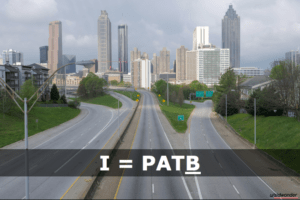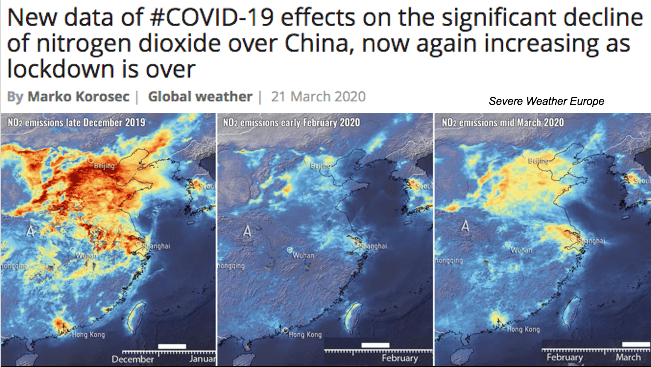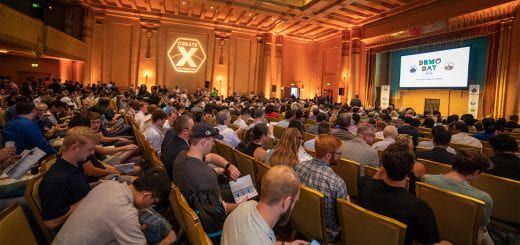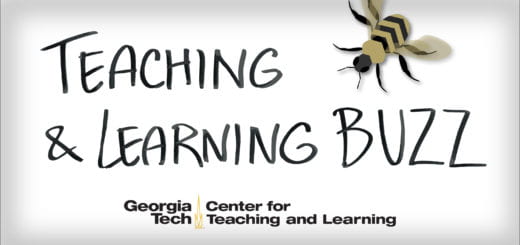Inviting COVID-19 Into the Classroom

There is no doubt that the COVID-19 pandemic has caused one of the most significant impacts to education in recent history. The wide-ranging impacts on the school, work, the economy, and everyday life have been a major source of stress for students and instructors alike. As Georgia Tech kicks off its first fully-remote Summer semester, CTL has been hard at work offering recommendations and resources to keep students engaged in our new remote instruction environment. With COVID-19 already on the minds of our students, this is a unique opportunity to openly discuss the impacts it is having on the world, and specifically in your field. Here I offer a brief case study on COVID-19 in Urban Environmental Planning & Design and offer a few tips on how to frame a discussion in your own class.
COVID-19 and the Environment

In the course CP6213: Urban Environmental Planning & Design, we frame environmental impacts using the I = PAT equation, where environmental Impact is a function of Population, Affluence, and Technology. But in this class, hosted in the School of City & Regional Planning, we introduce a new factor: Behavior. The I = PATB equation drives much of the discussion throughout the course, focusing on how urban planners can influence the behavioral aspects of environmental impacts through the planning and design process. There have been few events in recent history more influential on large-scale behavior than the COVID-19 pandemic. This was a unique opportunity to discuss the pandemic in light of the impacts on the environmental planning field and the world at large.
Globally, social distancing measures and quarantine temporarily shutting down industry has had a measurable effect on both air pollution and global carbon dioxide emissions, which is a goal of many contemporary environmental planners and engineers. While not all of the stories held up to scrutiny, you may have seen viral images of wildlife returning to urban areas or sediment settling in Venice canals. Studies of the COVID-19 impact on the environment are ongoing, and we will continue to learn what the pandemic has meant for the environment. Locally, quarantine in Atlanta reduced rush-hour traffic to a trickle while the state-wide shutdown was in effect. Similarly, reducing vehicle miles traveled and the gaining the resultant air pollution benefits is the goal of many contemporary transportation planners. All of this is a welcome silver lining to the pandemic, but at what cost? How sustainable can such a transition be when economic concerns outweigh environmental efforts?
Upon returning from spring break, I made time in our schedule to hold this important discussion. The first questions were on my students’ new remote learning situation: how has the pandemic and our remote transition impacted your life? Such questions were critical to the continued engagement of the class, and opening this shared discussion to all helped us set realistic participation expectations and policies moving forward. With the transition to remote teaching, we recommend that any course begin with a survey of your students’ situational factors. One great way to do this is to use the CTL Start-of-Semester Survey on Summer Remote Learning, which you can find in the Canvas Commons and directly import to your Canvas site.
I presented some of the above environmental impact news stories to my students, framed in the I=PATB equation. Afterward, I posed a series of questions sparking a deep class-wide conversation. What other environmental impacts have they read about during spring break? What lessons can we learn from the pandemic-driven shutdowns? What behavioral changes have you observed in yourself that might modify your personal environmental impact? Or for those around you? What cultural shifts might we experience even when the pandemic is over, and how might that impact your career in environmental planning? With these open-ended questions, my students had much more to offer than my initial research could find, and I learned as much as they did about the myriad ways this pandemic will influence their role as planners.
Inviting COVID-19 Into Your Classroom (Not Literally)
In our recent CTL workshop, Think Globally, Teach Locally, we highlighted the many ways instructors can bring Sustainable Development Goals into the classroom as a framework for discussion regardless of discipline. With the wide-ranging impacts of this pandemic, I argue the same can be done for COVID-19. On an individual level, consider taking some time to explore with your students how the social, economic, and behavioral impacts will influence their educational and career goals.
More broadly, how does the virus influence your discipline? How can your discipline contribute to studying the virus, or protect the health and wellbeing of vulnerable populations? What impacts will social distancing have on how practitioners in your field normally operate, and how can your field adapt? These are no small questions, and few will have a definitive answer. But the impacts of this virus are neither out of sight nor out of mind, and your students may be eager to engage in this important conversation. Holding such a discussion soon will help to keep Georgia Tech and our students on the cutting edge of the crisis, and may better prepare them for the world that emerges once it has passed, and their own unique role in it.
Additional Resources
For additional information on teaching in the remote environment, please visit the Remote Teaching Academy Canvas site for a variety of videos and other resources. Additionally, visit the CTL Keep Teaching site for extensive resources for teaching remotely. And as always, CTL faculty are also available to talk, answer questions, and think through pedagogical approaches on this or any other topic. You can request a chat with us here.






